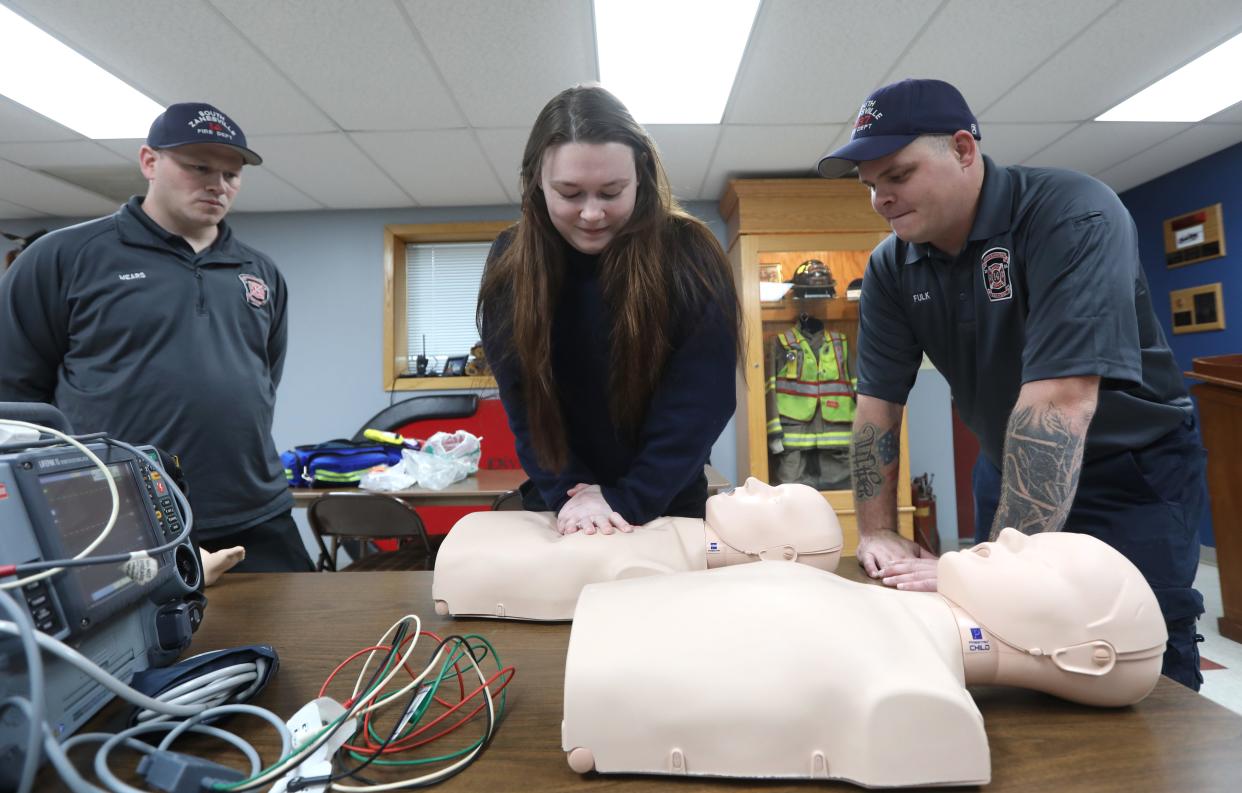Bill change staves off fire, EMS training troubles

ZANESVILLE − A section of a bill designed to cut costs and training for a number of professions in the state demonstrated the law of unintended consequences when the effect on local fire departments was realized. A last minute change to the bill last week staved off devastating ramifications that could have changed the landscape for local firefighters and EMS personnel.
House Bill 509, signed into law by Gov. Mike DeWine and due to take effect on April 6, would have cut the number of hours of continuing education required for firefighters to renew their licenses from 54 to 36 hours between each three-year renewal. It also reduced the number of hours required for a paramedic to renew their license, from 86 to 75 hours for every three-year renewal.
While fewer training hours may create costs savings for departments, according a review by the Ohio Legislative Services Commission, critics say another provision in the bill would have create a huge cost for small departments.
The bill eliminated the EMS assistant instructor certificate and the assistant fire instructor certificate. That means fire departments would not have been able to train their own firefighters or paramedics unless the instructor has a bachelor's degree in the subject being taught. In addition, there must be an instructor with a master's degree overseeing the program.
Adam Holmes, who represents House District 97, which covers Muskingum County and part of Guernsey County, met with concerned emergency personnel in early February. He was one of the sponsors of House Bill 52, which undoes the problems created by HB 509 in a single sentence:
"It is the intent of the General Assembly to reverse the changes enacted through H.B. 509 of the 134th General Assembly that merged emergency medical services training programs with emergency medical services continuing education programs and the related instructor certifications."
Training changes rang alarm bells
Fire departments typically have an in-house training program, taught by the most experienced members of the departments, who provide hands-on training. Those programs are augmented by online courses. Zanesville Fire Department uses Cleveland State University.
Coshocton County EMS, which runs emergency ambulance services for the entire county, would lose its ability to provide continuing education credits for its employees, said Coshocton County EMS Director Todd Shroyer.
"The state has two different systems (for training)," Shroyer said. "You have accredited training sites, like Mid-East Career and Technology Centers," he said. "There are not a lot of them, less than 100, that is where you go to get your initial certification. Most departments don't have an accredited training facility."
That part of the training would not change, Shroyer said, but the ability to get the required continuing education would change. Once that initial certification is earned, "you have to have a set number of continuing education hours to recertify, that is where the CE sites become important."
Taking those in-house programs away means fire personnel will have to travel for training − which is a big ask for volunteers, said Joel Dickinson, a paramedic and EMS instructor with Genesis HealthCare Systems. "If you put the demand on the volunteers remaining, you are going to lose people," he said. That stresses a system that is already short on volunteers. Four departments in Muskingum County are fully volunteer; Roseville, Wayne Township/Duncan Falls, Harrison Township and Adamsville.
"We cannot lose our approved training sites," he said. "You are talking MedFlight, they are an approved training site, they go to almost every department and put on education. We (Genesis) offer free education.
"If that goes away, what is going to fill that void?" Dickson said. "You can't train too much for something that could kill you," said Zanesville Fire Department Chief Jeff Bell.
"Continuing education sites are kind of the lifeblood, because every fire department can't afford to have training," said Josh Tilton, of Newtown Township Fire Department. "You are going to kill departments."
Very few current training officers, whether fire or emergency medicine, would've be able to meet the new qualifications required to train their fellow firefighters, EMTs or paramedics, Tilton said. "Even fewer departments have $100,000 to train them."
Gene Hanning, chief of Washington Township Fire Department, worried that sending his staff elsewhere to train takes them away from their station, potentially lengthening response times.
"This is will eliminate volunteer departments," said Chief Russell Taylor of the South Zanesville Fire Department.
Pleasant City VFD Chief Tom Regan said he tries to keep his department in the public eye, and they can be seen doing training around town. With 19 carded members, having to send them away for training would "be a big hurt on everybody" and make to hard to keep members. In addition, it would be hard to find the money to pay for training.
Shroyer said a Columbus think tank crafted language for the senate subcommittee on higher education, which inserted an amendment in HB509 in late December. Deep into the lame duck session, the bill was signed, amendment and all, in the wee hours of the final day of the last session before the end new Ohio legislature was sworn in.
"We talked about this last year and it was a no-go, we shut it down," Holmes said. "I don't know how it go inserted without legislative approval."
"Why didn't they ask? Why didn't they make a phone call to the Ohio Fire Chiefs' Association, or the Division of EMS?" Shroyer asked.
ccrook@gannett.com
740-868-3708
@crookphoto
This article originally appeared on Zanesville Times Recorder: Bill change staves off fire, EMS training troubles

